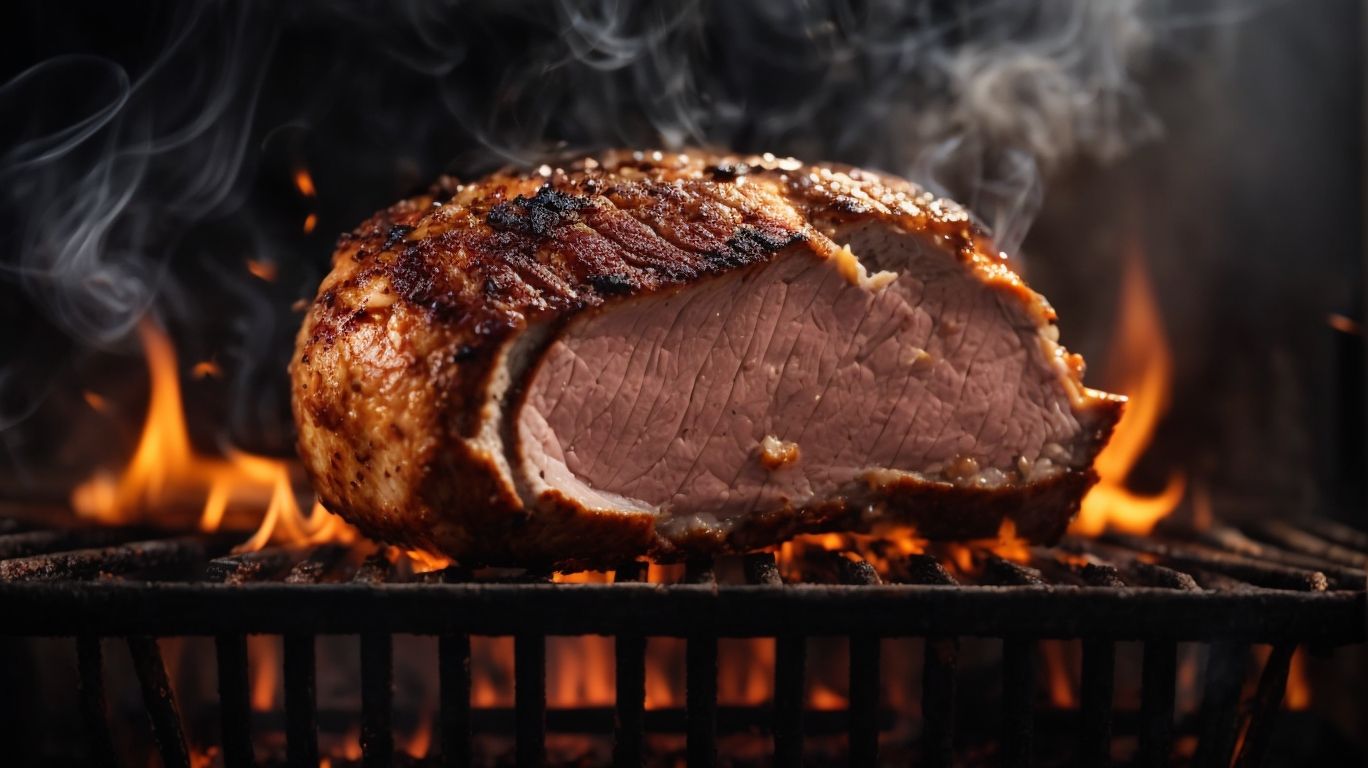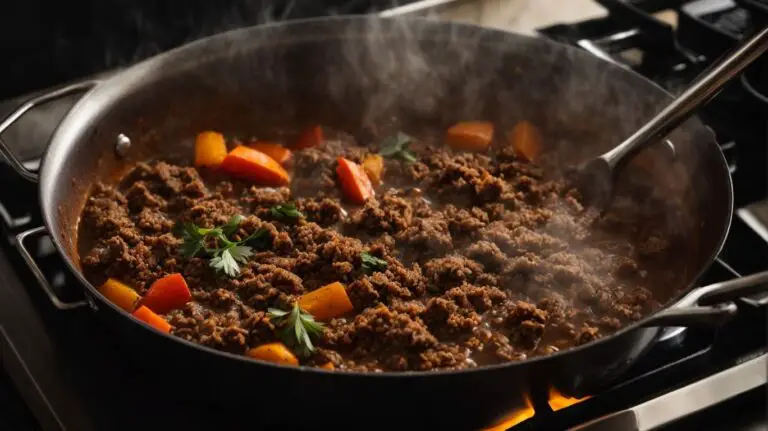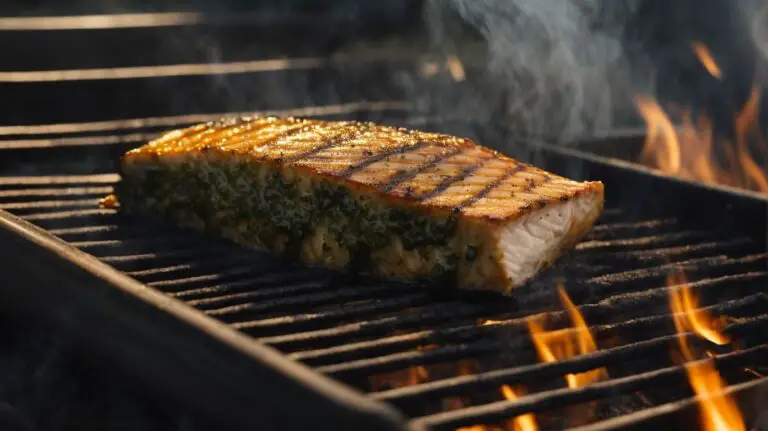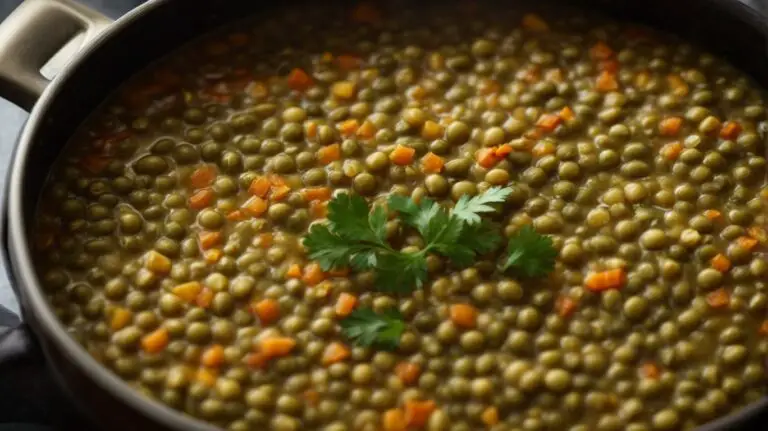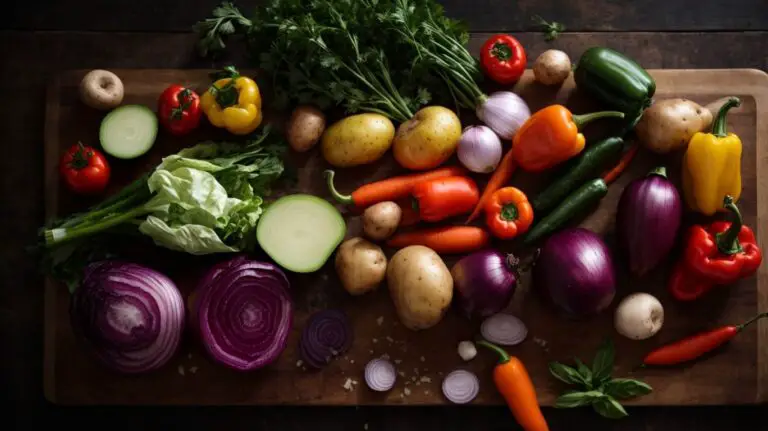How to Cook Pork Tenderloin on the Grill?
Are you a fan of grilling? Looking to try something new and delicious? Look no further than pork tenderloin!
In this article, we will explore everything you need to know about grilling pork tenderloin, from the difference between pork tenderloin and pork loin to the best grills and tools to use.
We’ll also cover how to prepare and season the pork tenderloin, cooking temperatures and times, and how to tell when it’s perfectly cooked.
Stick around for some serving suggestions and troubleshooting tips. Let’s fire up the grill and get cooking!
Key Takeaways:
What is Pork Tenderloin?
Pork Tenderloin, a lean and flavorful cut of meat, is a popular choice for grilling enthusiasts.
Known for its tenderness, pork tenderloin is a highly sought-after protein that lends itself to various cooking methods. Whether roasted, grilled, sautéed, or slow-cooked, this versatile ingredient adapts beautifully to different flavor profiles. Its subtle yet distinct taste makes it a favorite among both home cooks and seasoned chefs. The ease of preparation adds to its allure; a quick sear and a few simple seasonings are all that’s needed to elevate this cut of meat into a gourmet meal.
What is the Difference Between Pork Tenderloin and Pork Loin?
Understanding the distinction between Pork Tenderloin and Pork Loin is essential for selecting the right cut for your recipes.
One key difference between pork tenderloin and pork loin lies in their fat content. Pork Tenderloin is leaner with less fat marbling, making it a popular choice for those seeking a healthier protein option. On the other hand, Pork Loin includes more fat which adds flavor and moisture during cooking.
In terms of cooking methods, Pork Tenderloin is best suited for quick cooking techniques such as grilling, roasting, or pan-searing due to its tenderness. Conversely, Pork Loin benefits from slower cooking methods like braising or slow-roasting to break down the fat and create a succulent texture.
Regarding ideal uses in dishes, Pork Tenderloin’s mild flavor and tender texture make it versatile for a variety of recipes, from stir-fries to salads. In contrast, Pork Loin’s richer flavor profile and juiciness are excellent for hearty dishes like roasts, chops, or stews.
What You Will Need for Grilling Pork Tenderloin
Before grilling pork tenderloin, gather essential ingredients such as barbecue sauce, seasonings, and a reliable grill setup.
Plus these basics, consider including olive oil, garlic, and fresh herbs like rosemary and thyme for extra flavor. The Allrecipes Test Kitchen suggests marinating the pork in a mixture of these ingredients for at least an hour before grilling to boost the taste.
Regarding cooking, make sure your grill is preheated to the right temperature. A medium-high heat is usually ideal for pork tenderloin. Remember to oil the grates before placing the meat to prevent sticking.
For optimal results, aim to sear each side of the tenderloin for a few minutes before lowering the heat and letting it cook through. Covering the grill while cooking can help retain moisture, creating a juicy and tender final product.
What is the Best Grill for Cooking Pork Tenderloin?
Choosing the right grill for cooking pork tenderloin can significantly impact the flavor and texture of the final dish.
Regarding grilling pork tenderloin, different types of grills offer unique benefits. Gas grills, for example, provide convenient heat control and quick startup, ideal for busy weeknights. On the other hand, charcoal grills impart a smoky flavor that enhances the natural taste of the meat.
Two-zone grilling method can be particularly advantageous, allowing you to sear the tenderloin over direct heat for a flavorful crust before moving it to the cooler side for gentle cooking, preventing overcooking. Consider factors like heat distribution, grill size for even cooking, and the cooking surfaces to ensure the optimal grilling experience.
What are the Necessary Tools for Grilling Pork Tenderloin?
Plus a grill, essential tools for grilling pork tenderloin include a reliable thermometer, serving platter, and storage containers for leftovers.
When grilling pork tenderloin, having an instant-read thermometer is crucial for ensuring the meat is cooked to the perfect temperature, avoiding any risk of undercooking or overcooking. A quality thermometer will provide accurate readings, allowing you to achieve that juicy and tender result every time.
Once your tenderloin is grilled to perfection, a serving platter comes in handy for a beautiful presentation. Transfer the cooked meat onto a clean platter to enhance the visual appeal of your dish before serving to your guests.
After enjoying your delicious meal, it’s essential to properly store any leftover portions of grilled pork tenderloin. Transfer the leftovers into airtight storage containers and refrigerate promptly to maintain freshness and prevent spoilage.
For reheating, slice the leftover tenderloin and gently heat it in an oven or a skillet to preserve its tenderness and flavor. Be sure not to overcook during reheating to retain the juicy texture.
By using these tools and following proper storage guidelines, you can enjoy grilled pork tenderloin not only on the day of cooking but also for future meals without compromising on taste or quality.
Preparing the Pork Tenderloin for Grilling
Before grilling, it’s crucial to prepare the pork tenderloin by marinating it with a blend of seasonings like garlic powder, salt, and black pepper.
Start by creating the marinade in a mixing bowl. The garlic powder adds a savory kick, while the salt enhances the flavors, and black pepper gives a subtle heat.
For extra flavor depth, consider incorporating ingredients like honey for sweetness, soy sauce for umami richness, and a splash of Worcestershire sauce for complexity.
Ensure the pork tenderloin is properly cleaned and trimmed before immersing it in the marinade. This step allows the flavors to penetrate deeply into the meat.
Should You Marinate the Pork Tenderloin?
Marinating pork tenderloin can enhance its flavor and juiciness, making it a popular choice for many grillers.
One of the key benefits of marinating pork tenderloin is that it helps to tenderize the meat, resulting in a more succulent and flavorful dish. The marinade acts as a flavor conductor, infusing the meat with a rich blend of spices, herbs, and aromatics. For a delicious marinade, consider combining soy sauce, garlic, honey, and a touch of ginger for an Asian-inspired twist. Alternatively, a mixture of olive oil, lemon juice, rosemary, and thyme can bring out the natural flavors of the pork.
How to Season the Pork Tenderloin for Grilling?
Seasoning pork tenderloin with a balanced blend of garlic powder, salt, and black pepper can elevate its taste and tenderness on the grill.
Regarding enhancing the flavors of pork tenderloin, the possibilities are endless. To take your seasoning game to the next level, consider incorporating a mix of rosemary, thyme, and paprika for a Mediterranean-inspired taste sensation. Renowned chefs often recommend marinating the pork tenderloin overnight in a mixture of olive oil, balsamic vinegar, and honey to infuse it with rich flavors and ensure juicy results.
For those looking to add a touch of heat, a dash of cayenne pepper or chili powder can create a tantalizing contrast to the pork’s natural sweetness. Brining the pork tenderloin before seasoning can also help it retain moisture during cooking, resulting in a succulent and flavorful dish.
Cooking Pork Tenderloin on the Grill
Grilling pork tenderloin to perfection requires mastering the art of two-zone grilling and implementing tips for juicy and flavorful results.
Start by preheating your grill to around 400°F, setting it up for both direct and indirect heat zones. Season the pork tenderloin generously with your favorite rub or marinade, allowing it to sit at room temperature for about 20-30 minutes to absorb the flavors.
Place the tenderloin over direct heat to sear each side for about 2-3 minutes, creating a nice crust. Then, move it to the indirect heat side of the grill, close the lid, and continue cooking until the internal temperature reaches 145°F for medium-rare or 160°F for medium.
For added flavor, consider basting the tenderloin with a glaze or sauce during the last 5-10 minutes of cooking. Remember to let the pork rest for a few minutes before slicing to lock in the juices.
What is the Best Temperature for Grilling Pork Tenderloin?
To ensure a perfectly cooked pork tenderloin, use a reliable thermometer to monitor the internal temperature and achieve optimal doneness.
Temperature control plays a crucial role in grilling pork tenderloin as it helps you avoid undercooking or overcooking the meat, ensuring a safe and delicious outcome. When grilling pork tenderloin, the internal temperature is key to determining the level of doneness.
For a juicy and slightly pink center, aim for an internal temperature of 145°F (63°C) for medium-rare. If you prefer medium, cook until it reaches 160°F (71°C). For those who like it well-done, go for an internal temperature of 170°F (77°C).
How Long Should You Grill Pork Tenderloin?
Grilling pork tenderloin for the right amount of time is crucial to achieve a perfect balance of tenderness and juiciness.
Regarding grilling pork tenderloin, ensuring that it is cooked just right can make all the difference in creating a flavorful and succulent dish. The ideal grilling time for pork tenderloin varies depending on its thickness and desired doneness.
If you prefer your pork tenderloin to be slightly pink in the center, you would aim for an internal temperature of around 145°F (63°C) for medium-rare. Thicker cuts may require longer cooking times, so having a reliable meat thermometer is essential.
By monitoring the temperature throughout the cooking process, you can avoid the risk of undercooking or overcooking the pork tenderloin. Remember to let the meat rest for a few minutes after grilling to allow the juices to redistribute, resulting in a more flavorful and tender final product.
How to Tell if the Pork Tenderloin is Cooked?
Determining the doneness of pork tenderloin can be done by using a thermometer to ensure it reaches the recommended internal temperature.
For a perfectly cooked pork tenderloin, follow these guidelines.
- First, insert the thermometer into the thickest part of the meat without touching the bone.
- For a medium-rare tenderloin, aim for an internal temperature of 145°F (63°C).
- Medium is achieved at 160°F (71°C) while well-done requires a temperature of 170°F (77°C).
- Plus temperature readings, you can also look for visual cues such as a slightly pink center for medium-rare, a pale pink center for medium, and no pinkness for well-done meat.
Letting the Pork Tenderloin Rest and Serving Suggestions
Allowing the grilled pork tenderloin to rest after cooking is essential to retain its juices and ensure a succulent dining experience.
Resting the well-grilled pork tenderloin is crucial as it allows the juices to redistribute evenly throughout the meat. This process ensures that each bite is flavorful and tender, enhancing the overall dining satisfaction. The ideal resting time varies depending on the size of the cut, with smaller tenderloins needing about 5-10 minutes and larger ones requiring 15-20 minutes. Resting also continues the cooking process slightly, helping the meat reach its perfect doneness and texture.
When serving grilled pork tenderloin, consider pairing it with complementary side dishes such as roasted vegetables, creamy mashed potatoes, or a fresh garden salad. These sides not only add variety to the meal but also enhance the flavors of the tenderloin. Garnishes like chopped herbs, a squeeze of citrus, or a drizzle of balsamic glaze can elevate the dish and add a pop of freshness.
Troubleshooting Common Problems when Grilling Pork Tenderloin

Credits: Poormet.Com – David Allen
While grilling pork tenderloin, encountering challenges is common, but with the right tips and techniques, you can overcome them for a delicious outcome.
One common issue faced by many grillers is the tendency of pork tenderloin to become dry during the grilling process. To combat this, try brining the meat beforehand or marinating it for a few hours to enhance moisture retention. Additionally, avoid overcooking the tenderloin by using a meat thermometer to ensure it reaches a safe internal temperature without drying out.
Another challenge is achieving even cooking throughout the entire tenderloin. To solve this, consider butterflying the cut to have a more uniform thickness, allowing for consistent cooking. Utilizing a two-zone grilling method can help control the heat distribution, preventing any sections from getting overcooked or undercooked.
Frequently Asked Questions
1. How to Cook Pork Tenderloin on the Grill?
Cooking pork tenderloin on the grill is a great way to infuse the meat with smoky, charred flavor. Here’s how you can do it:
2. What ingredients do I need to cook pork tenderloin on the grill?
You will need pork tenderloin, olive oil, your choice of seasoning or marinade, and a grill.
3. How long should I cook pork tenderloin on the grill?
The time it takes to cook pork tenderloin on the grill will depend on the size and thickness of the meat. As a general rule of thumb, cook it for 15-20 minutes, flipping every 5-7 minutes, until the internal temperature reaches 145°F.
4. Should I marinate the pork tenderloin before grilling?
Marinating the pork tenderloin before grilling can help enhance the flavor and tenderness of the meat. You can marinate it for 30 minutes to 24 hours, depending on the strength of the marinade.
5. How do I know when the pork tenderloin is cooked?
Use a meat thermometer to check the internal temperature of the pork tenderloin. It should reach 145°F for medium-rare or 160°F for medium. Also, the juices should run clear when pierced with a knife.
6. Can I grill pork tenderloin directly on the grill or should I use foil?
It is best to grill pork tenderloin directly on the grill grates to get those beautiful grill marks and charred flavor. Use foil only if you are worried about the meat sticking to the grates.

